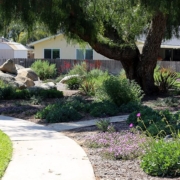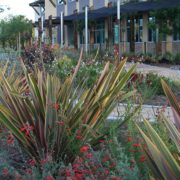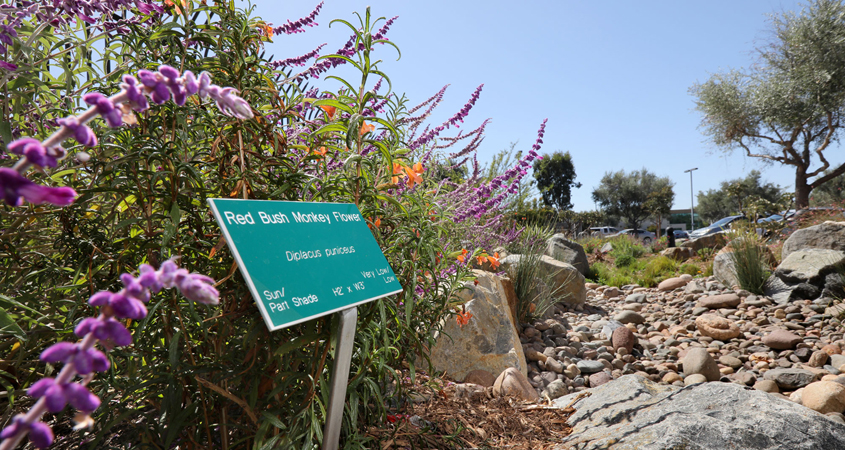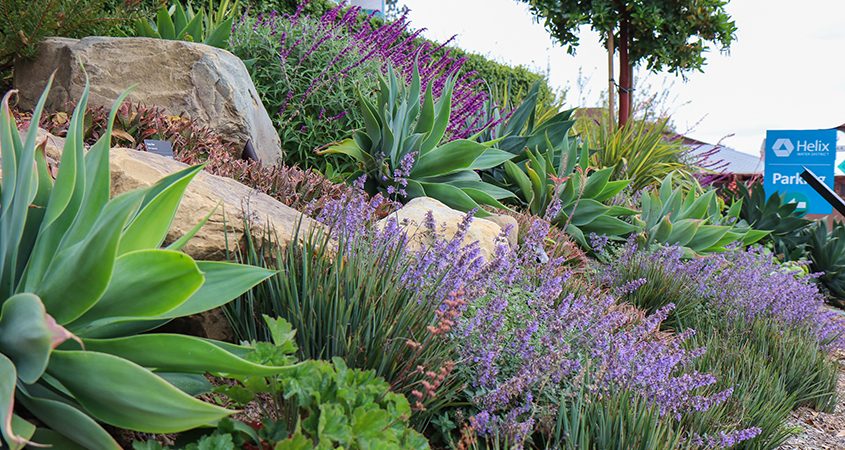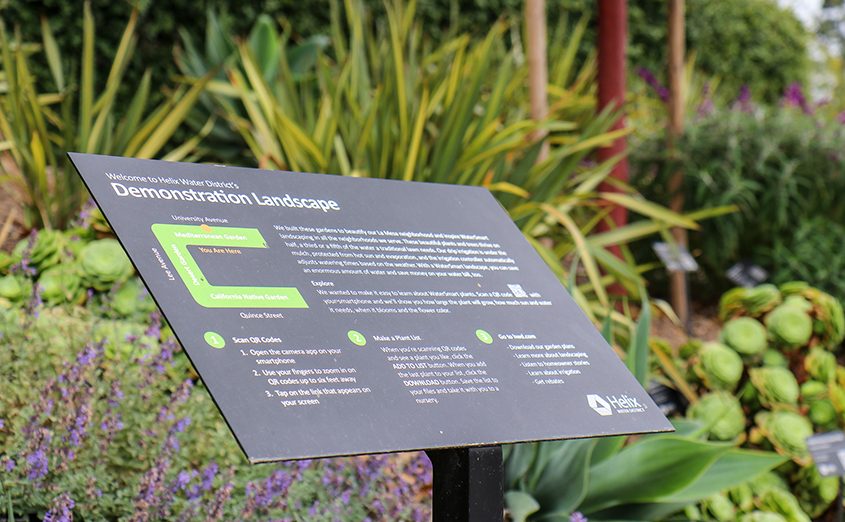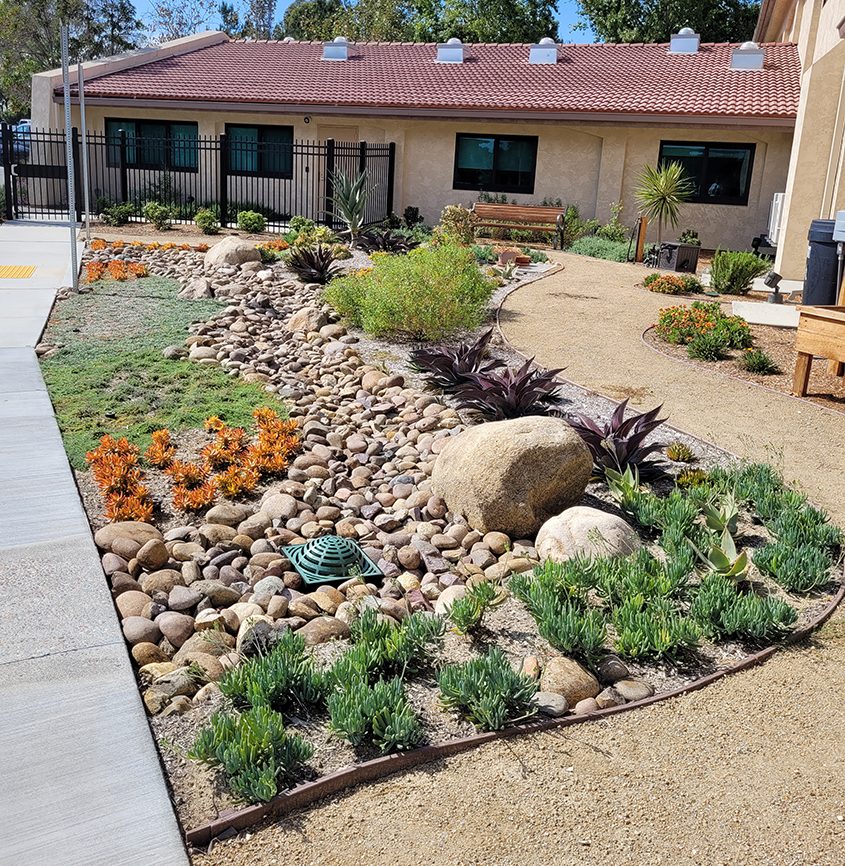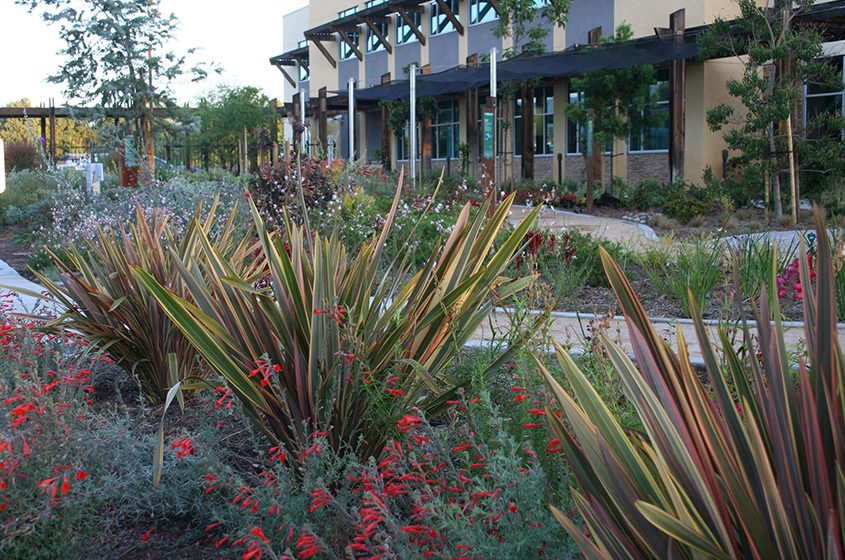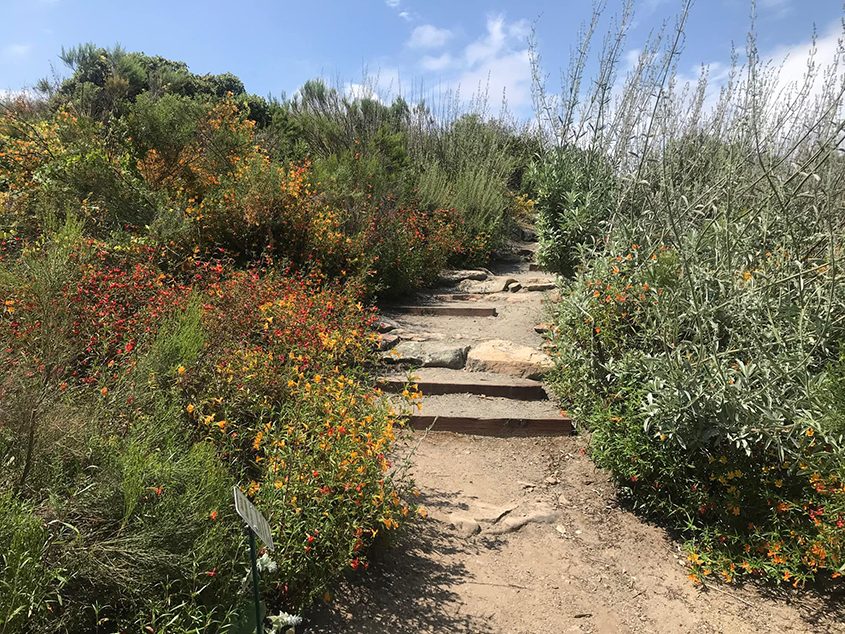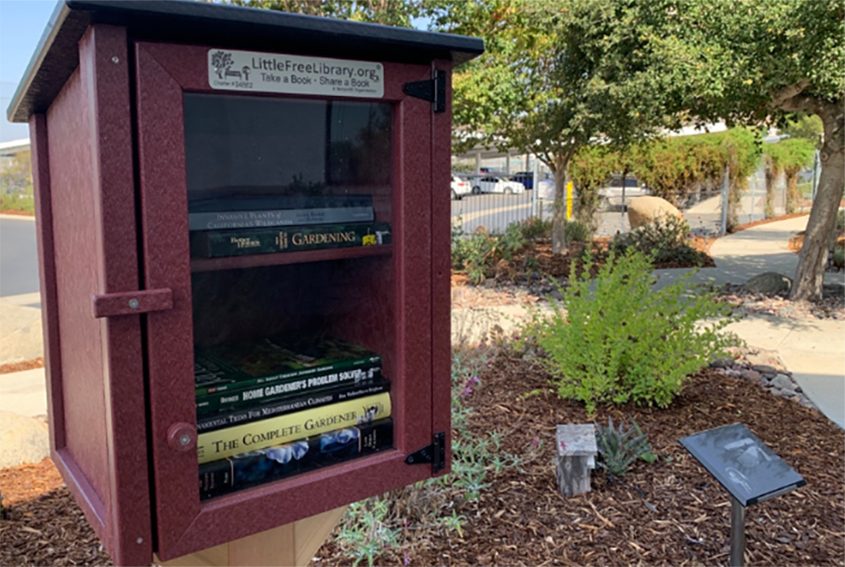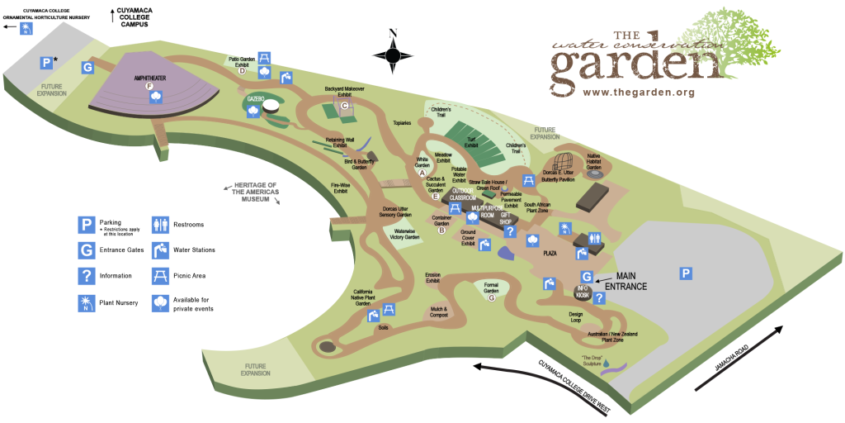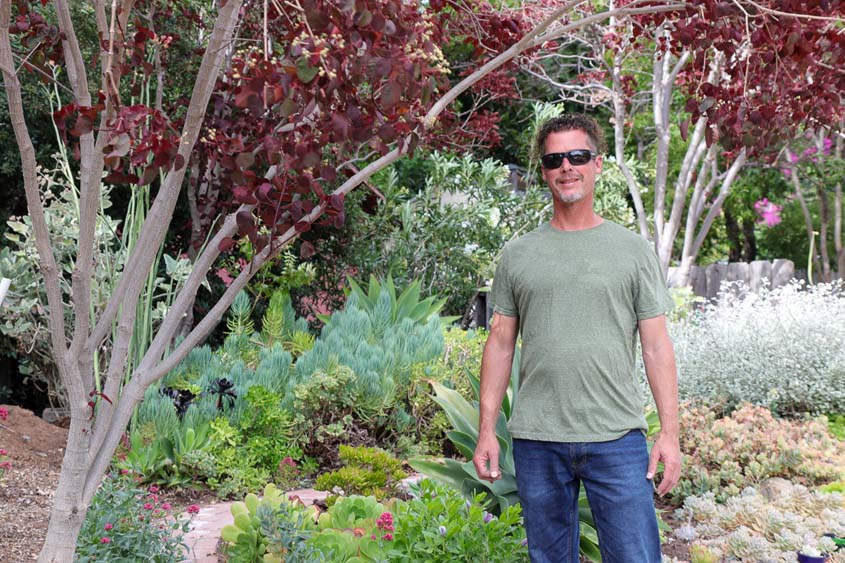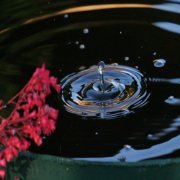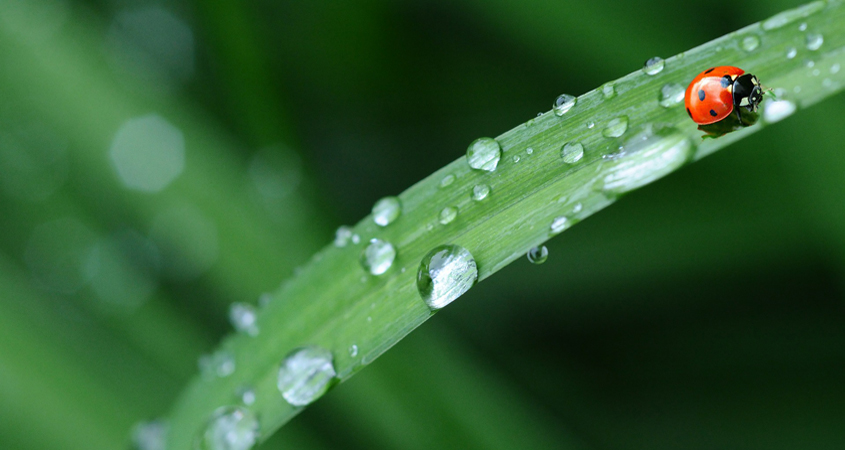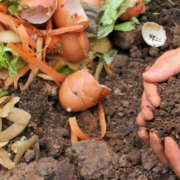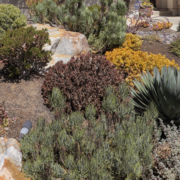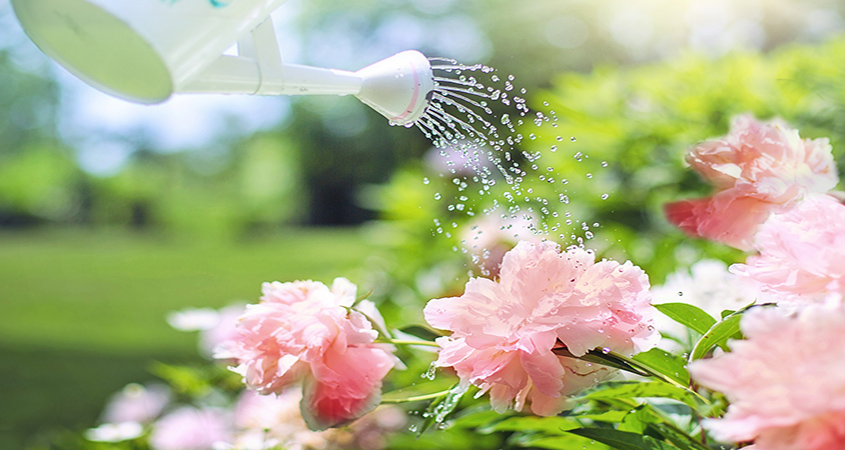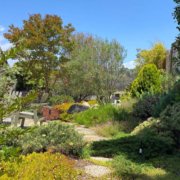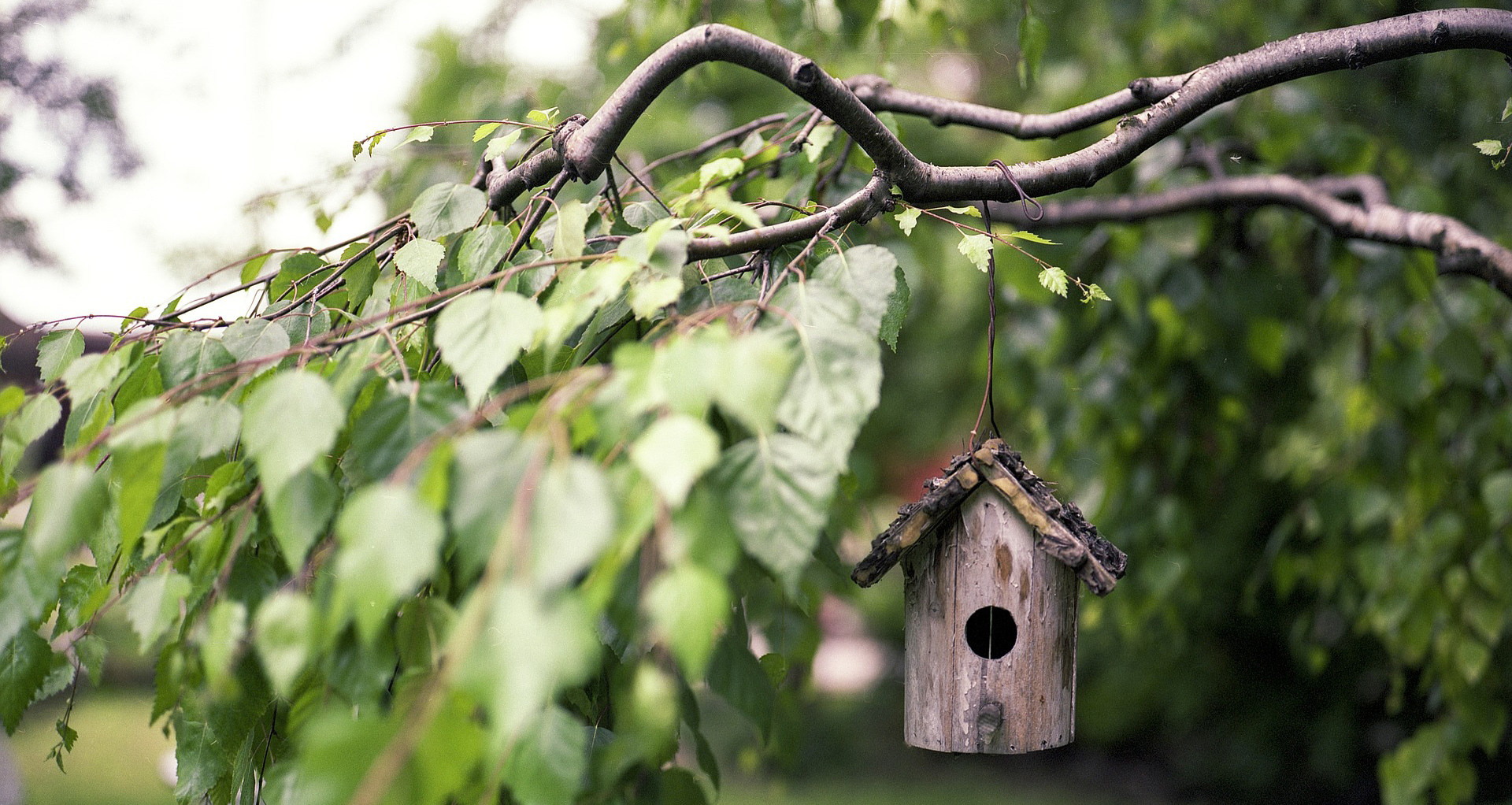Jamacha Park HOA Wins Award For Landscape Makeover Project
The Jamacha Park Homeowners Association in Rancho San Diego is the region’s latest showcase for low-water landscaping after receiving one of four One Water Awards from the Metropolitan Water District of Southern California.
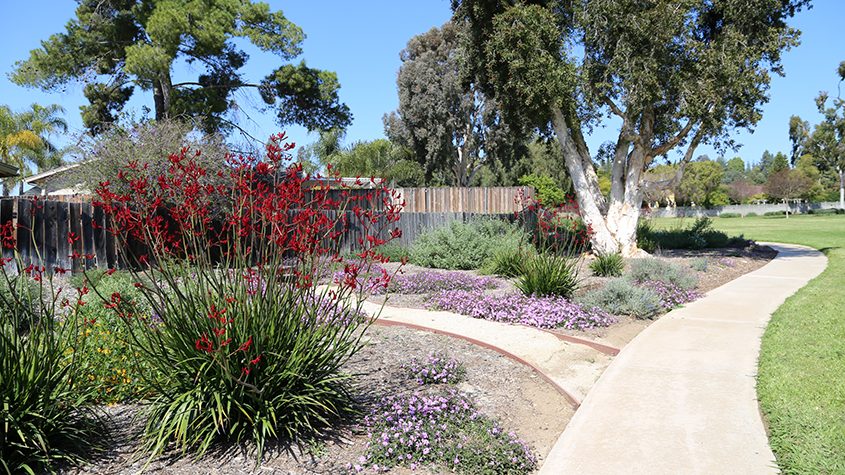
Accessible walkways bring residents closer to nature as part of its new landscaping. Photo: MSE Landscape
The awards recognize large-scale improvements to facilities and landscapes that achieve significant water savings. The four projects honored in early May are expected to save 200 million gallons of water annually. Projects are also recognized for technology innovations, environmental stewardship, and their focus on water sustainability.
Jamacha Park is a 64-home community. The HOA worked with MWD, the San Diego County Water Authority, and the County of San Diego’s Watershed Protection Program to replace 58,000 square feet of grass with sustainable landscaping, including climate-appropriate plants.

(L to R): Debby Dunn, San Diego County Water Authority; Mike Seymour, MSE Landscape; Brian Faris, Monarch Environmental; Scott Norris, County of San Diego; Matt Davenport, Monarch Environmental; Chad Praul, Environmental Incentives; and Tenille Otero, Otay Water District. Photo: Metropolitan Water District of Southern California
“I hope the project that we have done will show other communities what is possible. There is a way to get water savings and still have a beautiful landscape everyone can enjoy,” said Jamacha Park HOA Board President Mary Kay Sieckman.
The HOA board, community residents, and landscape professionals worked together on the landscape makeover. The newly beautified community spaces are accessible to all residents while reducing water use.
Jamacha Park leaders achieve a long-time goal
Sieckman said the HOA learned about these programs through its property management company. “When the board members heard about it, they jumped at it. They were very excited because it would be a step forward toward a long-time goal we knew needed to be done.”
See a video featuring Jamacha Park HOA Board President Mary Kay Sieckman describing the landscape makeover process.
The project has been so successful that the HOA plans to replace additional turf, eventually removing a total 100,000 square feet of grass for a potential water savings of 4 million gallons annually.
The Jamacha Park HOA received funding and assistance through MWD’s Turf Replacement Rebate Program available through the Water Authority and the County’s Landscape Optimization Service. Working with the County’s Watershed Protection Program, residences and businesses in unincorporated areas of San Diego County can be eligible for enhanced water-use efficiency rebates.
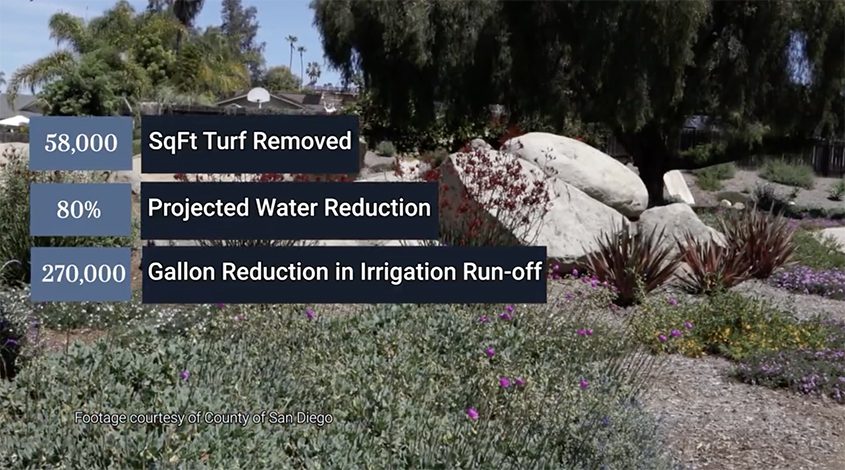
The Jamacha Park HOA achieved significant water savings with its landscape makeover project. Photo: Metropolitan Water District of Southern California/Screenshot
“We have accomplished something with the help of all these agencies. It shows to the community you can save water and still have a beautiful landscape. You don’t have to rely on grass for everything,” Sieckman said.
County Landscape Optimization Service can assist customers with landscape upgrades
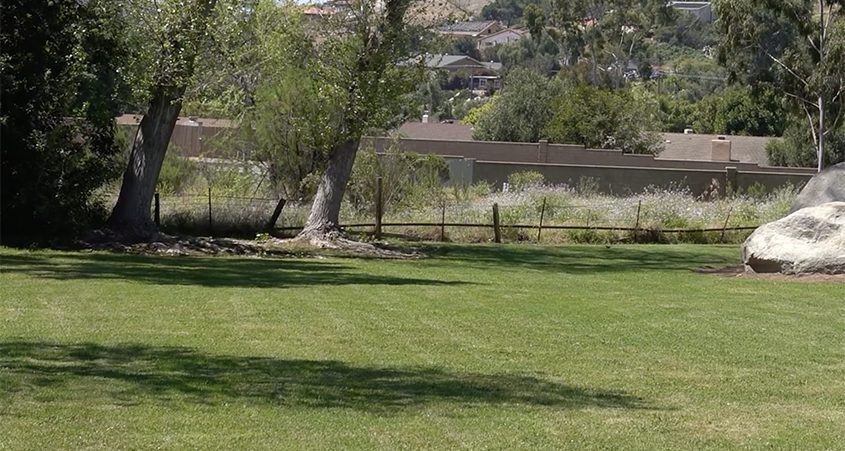
The Jamacha Park community’s landscaping before its makeover. Photo: MSE Landscape/Screenshot
To make the process of applying for rebates easier and maximize the return on investment, the County added a Landscape Optimization Service (LOS), a unique technical assistance program for large-scale landscaping projects. It is part of the Waterscape Rebate Program, which helps residential, commercial, and agricultural customers in unincorporated areas to make landscape upgrades that improve the region’s climate resilience and reduce the flow of pollutants into waterways.
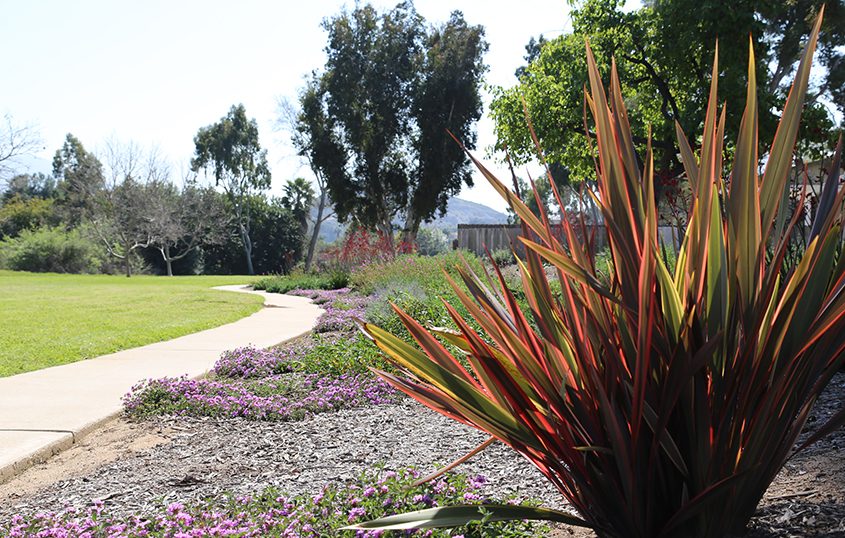
The project has been so successful that the HOA plans to replace additional turf, eventually removing a total 100,000 square feet of grass for a potential water savings of 4 million gallons annually. Phoro: MSE Landscape
County of San Diego Land Use Environmental Planning Manager Scott Norris says the LOS program helps applicants navigate the requirements, overcome any barriers to participation, and maximize their eligibility. “Often HOAs just need a bit of help to get started. We have worked with more than a dozen HOAs and more than half are coming back to complete additional turf removal projects because they see the value for their communities.”
Multiple benefits from sustainable landscapes
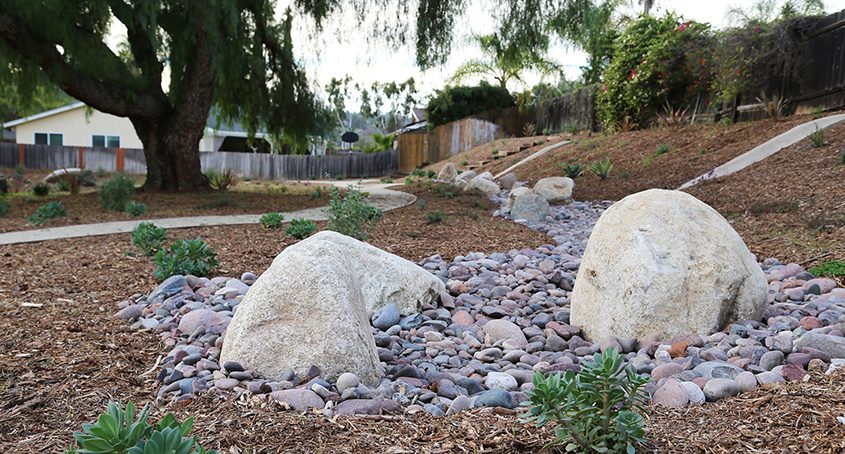
Dry riverbeds help manage stormwater runoff. Photo: MSE Landscape
Sustainable landscapes produce multiple benefits including reduced water use, enhanced biodiversity, increased stormwater retention, and decreased run-off.
IMPACT:
- 58,000 square feet of turf removed
- 270,000-gallon reduction in irrigation runoff annually
- 12% savings in water use in the first year
- $232,000 in utility incentives
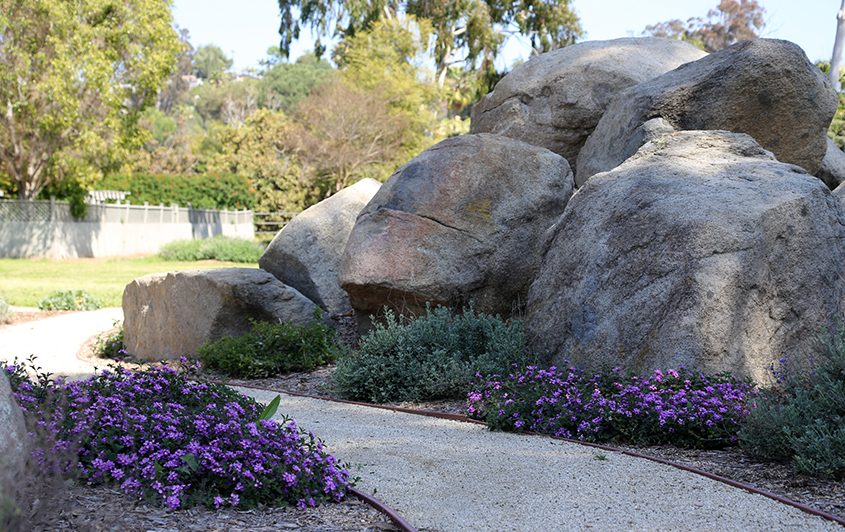
New landscape features include boulders framing walkways. Photo: MSE Landscape
Water customers in unincorporated San Diego County can determine their eligibility at SanDiegoCounty.gov/WatershedRebates. More information on the Landscape Optimization Service can be found here. The program is currently recruiting new participants.
The Waterscape Rebate Program helps to protect local waterways by reducing pollutants that enter storm drains. When irrigation systems overflow from landscaping, runoff may carry pollutants like pesticides, herbicides, and fertilizers into the storm drain system and cause the same negative effects as runoff from rainfall. Reducing turf helps reduce irrigation use and runoff. HOA landscapes are potentially significant contributors.
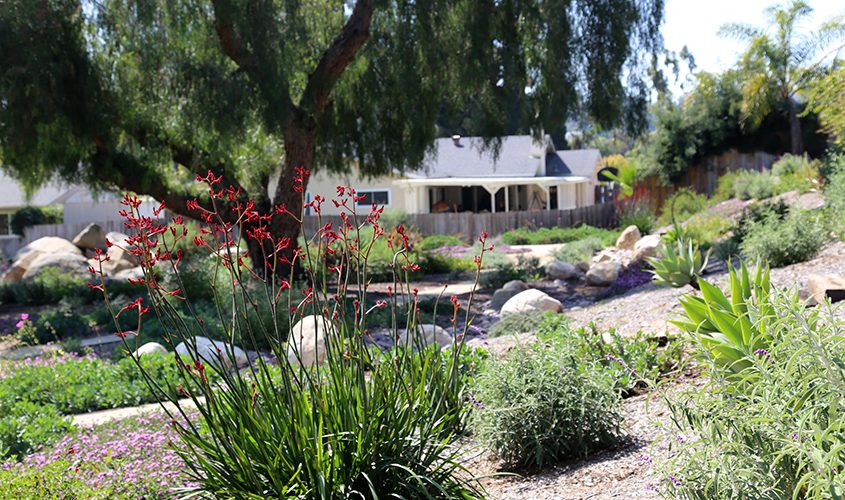
The County Watershed Protection Program is currently seeking new applicants. Photo: MSE Landscape
The program includes outreach and education to commercial, industrial, and residential properties in unincorporated areas of the county. In addition, the County is offering rebate programs for upgrades, including rain gardens, gutters, permeable pavement, and regular septic system pumping.
Learn more about the County of San Diego Watershed Protection Program at its website.

